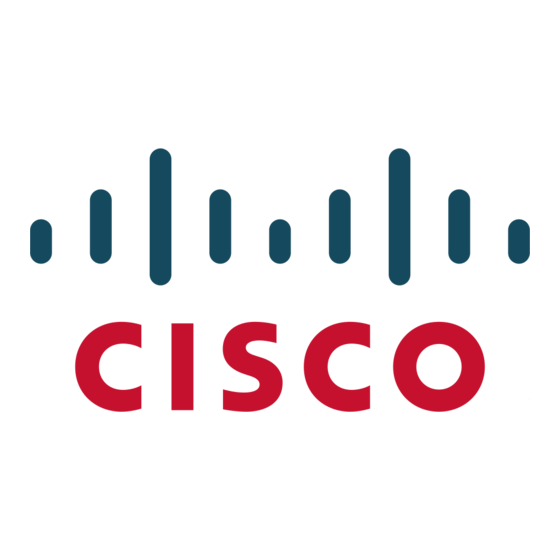- ページ 7
サーバー Cisco TelePresenceのPDF マニュアルをオンラインで閲覧またはダウンロードできます。Cisco TelePresence 24 ページ。 Configuring a cisco unified communications
manager sip trunk with a cisco telepresence content server
Cisco TelePresence にも: パンフレット (4 ページ), 仕様 (7 ページ), インストレーション・マニュアル (4 ページ), 管理者マニュアル (27 ページ), クイック・リファレンス・マニュアル (2 ページ), 設置シート (2 ページ)

Chapter 3
Configuring a Cisco Unified Communications Manager SIP Trunk with a Cisco TelePresence
Note
Because no default SIP route patterns exist in CUCM, the administrator must configure them. Domain
name examples: cisco.com, my-pc.cisco.com, *.com, rtp-ccm[1-5].cisco.com Valid characters for
domain names: [, -, ., 0-9, A-Z, a-z, *, and ]. IPv4 address examples: 172.18.201.119 or
172.18.201.119/32 (explicit IP host address); 172.18.0.0/16 (IP subnet); 172.18.201.18/21 (IP subnet).
Valid characters for IP addresses: 0-9, ., and /
Field
Pattern Usage
IPv4 Pattern
IPv6 Pattern
Description
Route Partition
SIP Trunk
Block Pattern
Calling Party Transformation
Description
(Required) From the drop-down list, choose either Domain Routing or IP
Address Routing.
(Required) Enter the domain, sub-domain, IPv4 address, or IP subnetwork
address.
If the SIP trunk supports IPv6 or both IPv4 and IPv6 (dual-stack mode),
configure the IPv6 Pattern in addition to the IPv4 pattern.
Note
For the IP subnetwork address, in Classless Inter-Domain Routing
(CIDR) notation, X.X.X.X/Y; where Y is the network prefix that
denotes the number of bits in the address that will be the network
address.
Cisco Unified Communications Manager uses SIP route patterns to route
or block both internal and external calls. The IPv6 address in this field
provides the basis for routing internal and external calls to SIP trunks that
support IPv6.
If the SIP trunk supports IPv6 or both IPv4 and IPv6 (dual-stack mode),
configure the IPv4 Pattern in addition to the IPv6 Pattern.
For this optional entry, enter a description of the SIP Route Pattern. The
description can include up to 50 characters in any language, but it cannot
include double-quotes ("), percentage sign (%), ampersand (&), or angle
brackets (<>).
If you want to use a partition to restrict access to the SIP route pattern,
choose the desired partition from the drop-down list box. If you do not
want to restrict access to the SIP route pattern, choose <None> for the
partition.You can configure the number of partitions that display in this
drop-down list box by using the Max List Box Items enterprise parameter.
If more than 250 partitions are specified by using the Max List Box Items
enterprise parameter, the Find button displays next to the drop-down list
box. Click the Find button to display the Select Partition window. Enter a
partial partition name in the List items where Name contains field. Click
the desired partition name in the list of partitions that displays in the Select
item to use box and click Add Selected.
(Required) Use the drop-down list to choose the SIP trunk to which the SIP
route pattern should be associated.
If you do not want this pattern to be used for routing calls, click the Block
Pattern check box.
Cisco TelePresence Content Server Release 6.2.1 Administration and User Guide
CUCM Integration with Content Server 6.2
3-21
